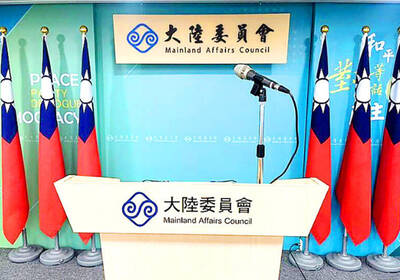Japan’s Panasonic Corp yesterday announced an annual net loss of ¥378.96 billion (US$3.95 billion) owing to the economic downturn and warned its bottom line would stay in the red this year.
The group, which is in the midst of cutting 15,000 jobs and closing dozens of plants, said it expected to lose ¥195 billion for the current business year to March because of weak sales and restructuring costs.
GRIM RESULTS
The figures are the latest in a slew of grim earnings results from Japan’s high-tech heavyweights, which are reeling from a slump in exports.
Panasonic said its revenue fell 14.4 percent in the year to March to ¥7.77 trillion, hit by sluggish demand for plasma televisions, digital cameras, semiconductors and home appliances.
Operating profit plunged 86 percent to ¥72.9 billion.
The group, which changed its corporate name from Matsushita Electric Industrial in October, expects its sales to slump 10 percent this year, but it aims to boost operating profit by 3 percent to ¥75 billion.
ELECTRONICS
Other Japanese electronics makers are also in the red because of the global economic crisis, which has sapped demand for their products and pushed up the value of the yen, reducing their export earnings.
Sony on Thursday announced its first annual loss in 14 years, while Hitachi announced earlier in the week that it went more than US$8 billion into the red, the biggest-ever deficit posted by a Japanese manufacturer.

‘DANGEROUS GAME’: Legislative Yuan budget cuts have already become a point of discussion for Democrats and Republicans in Washington, Elbridge Colby said Taiwan’s fall to China “would be a disaster for American interests” and Taipei must raise defense spending to deter Beijing, US President Donald Trump’s pick to lead Pentagon policy, Elbridge Colby, said on Tuesday during his US Senate confirmation hearing. The nominee for US undersecretary of defense for policy told the Armed Services Committee that Washington needs to motivate Taiwan to avoid a conflict with China and that he is “profoundly disturbed” about its perceived reluctance to raise defense spending closer to 10 percent of GDP. Colby, a China hawk who also served in the Pentagon in Trump’s first team,

SEPARATE: The MAC rebutted Beijing’s claim that Taiwan is China’s province, asserting that UN Resolution 2758 neither mentions Taiwan nor grants the PRC authority over it The “status quo” of democratic Taiwan and autocratic China not belonging to each other has long been recognized by the international community, the Mainland Affairs Council (MAC) said yesterday in its rebuttal of Beijing’s claim that Taiwan can only be represented in the UN as “Taiwan, Province of China.” Chinese Minister of Foreign Affairs Wang Yi (王毅) yesterday at a news conference of the third session at the 14th National People’s Congress said that Taiwan can only be referred to as “Taiwan, Province of China” at the UN. Taiwan is an inseparable part of Chinese territory, which is not only history but

CROSSED A LINE: While entertainers working in China have made pro-China statements before, this time it seriously affected the nation’s security and interests, a source said The Mainland Affairs Council (MAC) late on Saturday night condemned the comments of Taiwanese entertainers who reposted Chinese statements denigrating Taiwan’s sovereignty. The nation’s cross-strait affairs authority issued the statement after several Taiwanese entertainers, including Patty Hou (侯佩岑), Ouyang Nana (歐陽娜娜) and Michelle Chen (陳妍希), on Friday and Saturday shared on their respective Sina Weibo (微博) accounts a post by state broadcaster China Central Television. The post showed an image of a map of Taiwan along with the five stars of the Chinese flag, and the message: “Taiwan is never a country. It never was and never will be.” The post followed remarks

INVESTMENT WATCH: The US activity would not affect the firm’s investment in Taiwan, where 11 production lines would likely be completed this year, C.C. Wei said Investments by Taiwan Semiconductor Manufacturing Co (TSMC, 台積電) in the US should not be a cause for concern, but rather seen as the moment that the company and Taiwan stepped into the global spotlight, President William Lai (賴清德) told a news conference at the Presidential Office in Taipei yesterday alongside TSMC chairman and chief executive officer C.C. Wei (魏哲家). Wei and US President Donald Trump in Washington on Monday announced plans to invest US$100 billion in the US to build three advanced foundries, two packaging plants, and a research and development center, after Trump threatened to slap tariffs on chips made